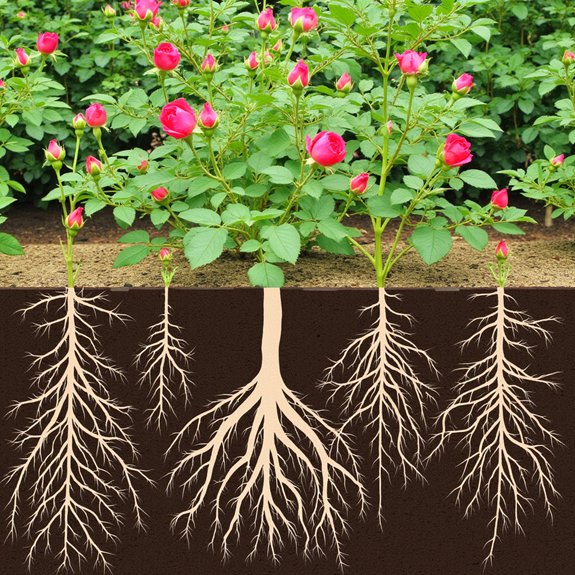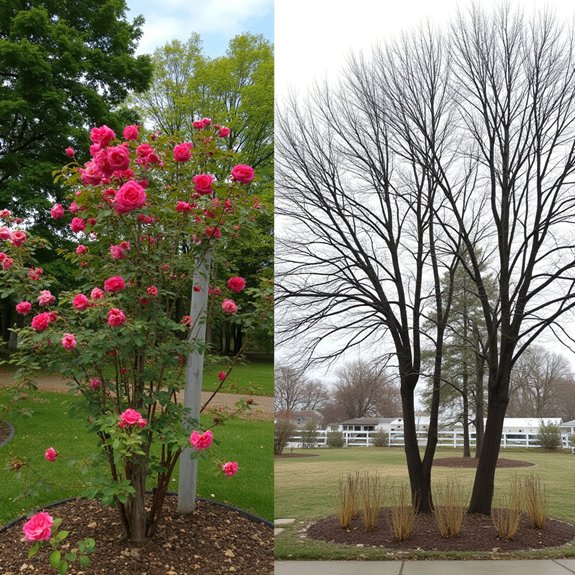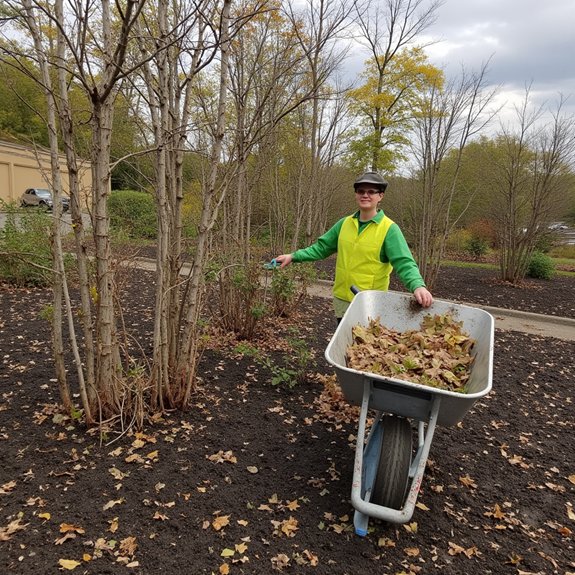Most gardeners classify roses as perennials, but this assumption can lead to dead plants and frustrated expectations. Rose survival depends on complex factors including hardiness zones, variety selection, and winter protection methods. In USDA zones 3-5, many roses require extensive mulching, burlap wrapping, or even complete removal to survive freezing temperatures. Meanwhile, tender varieties like tea roses often behave more like annuals in northern climates, dying back completely after the first hard frost.
Contents
Understanding Plant Life Cycle Classifications

Why do some gardeners replace their plants every year while others enjoy the same blooms for decades? The answer lies in plant classification and understanding growth stages. Annuals complete their entire life cycle in one growing season, sprouting, flowering, producing seeds, then dying. Biennials take two years to finish their journey, growing foliage first, then blooming and dying in year two. Perennials live for three or more years, returning season after season once established. However, climate plays a vital role. Some plants may act as perennials in mild zones but become annuals in harsher conditions.
Why Roses Are Classified as Perennials
Roses earn their perennial status through their remarkable ability to return year after year, living well beyond the three-year minimum that defines this plant category. These perennial characteristics include developing extensive root systems that survive winter dormancy periods, storing energy for successive growing seasons.
Most rose varieties demonstrate impressive longevity, with hybrid teas averaging 10 years while climbing and native roses can thrive for over 50 years. Their woody stems and established root networks allow roses to withstand seasonal changes, entering dormancy each winter before emerging with fresh growth and blooms the following spring, solidifying their classification as true perennials.
Climate Zones and Rose Survival

Where can gardeners successfully grow roses throughout the country? Most rose varieties thrive in hardiness zones 5-8, where moderate temperatures create ideal growing conditions. However, climate impact varies markedly across regions, with gardeners in zones 2-4 facing harsh winters and those in zones 9-11 dealing with extreme heat.
Cold-hardy rose varieties can survive in northern zones with proper winter protection, while heat-tolerant types flourish in southern climates. Zones below 2 or above 11 present the greatest challenges, often requiring gardeners to treat roses as annuals or provide exceptional care.
Winter Dormancy and Seasonal Behavior
Each winter, these beloved garden plants undergo a natural process that often alarms new gardeners who witness their vibrant bushes seemingly dying back. This dormancy represents roses storing energy for next season’s spectacular blooms, not death.
During dormant cycles, roses drop leaves and appear lifeless for 4-6 weeks minimum. Even warm-climate gardeners in zones 9-11 must force this rest period by stopping fertilization and deadheading in late fall.
Seasonal care involves protecting non-hardy varieties with mulch, rose collars, or burlap barriers. Container roses need shelter in unheated spaces, while hardy varieties typically survive winter without intervention.
When Roses Might Be Treated as Annuals

Despite their perennial nature, certain circumstances force gardeners to replace roses annually rather than enjoying their typical multi-year lifespan. Extreme climates in zones below 2 or above 11 create harsh conditions where rose varieties struggle to survive winter freezes or scorching summers. When roses are planted outside their recommended hardiness zones, they often fail to return the following season, necessitating annual treatment.
Inadequate care also leads to annual replacement. Unsuitable rose varieties for specific regions, poor soil conditions, or insufficient winter protection can cause even hardy roses to perish, making yearly replanting the only viable option for continuous garden color.
Protecting Roses for Long-Term Success
Most roses require strategic protection measures to guarantee they survive harsh winters and return stronger each growing season. Hardy varieties typically need minimal intervention in their designated zones, but extra care becomes essential during unusually cold spells or extreme weather events.
Rose collars and burlap bags provide excellent winter protection when combined with heavy mulch around the base. Container roses need special attention, requiring varieties hardy to two zones below your location. Move potted roses to unheated garages or sheds during winter months.
Construct windbreaks in exposed areas to prevent cane damage and broken branches from harsh winter winds.
Maximizing Rose Longevity in Your Garden
Beyond winter protection, successful rose gardening requires selecting varieties matched to local climate conditions and providing consistent, quality care throughout the growing season. Smart rose selection means choosing cultivars rated for your hardiness zone, with cold-hardy options for northern gardeners and heat-tolerant varieties for southern climates. Proper soil preparation creates the foundation for longevity, requiring well-draining soil amended with compost and organic matter.
Regular feeding, watering, and pruning maintain plant health and vigor. Consistent care practices, combined with appropriate variety selection and thorough soil preparation, guarantee roses thrive for decades rather than struggling as short-lived disappointments in unsuitable conditions.
